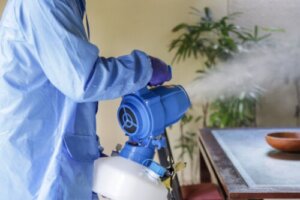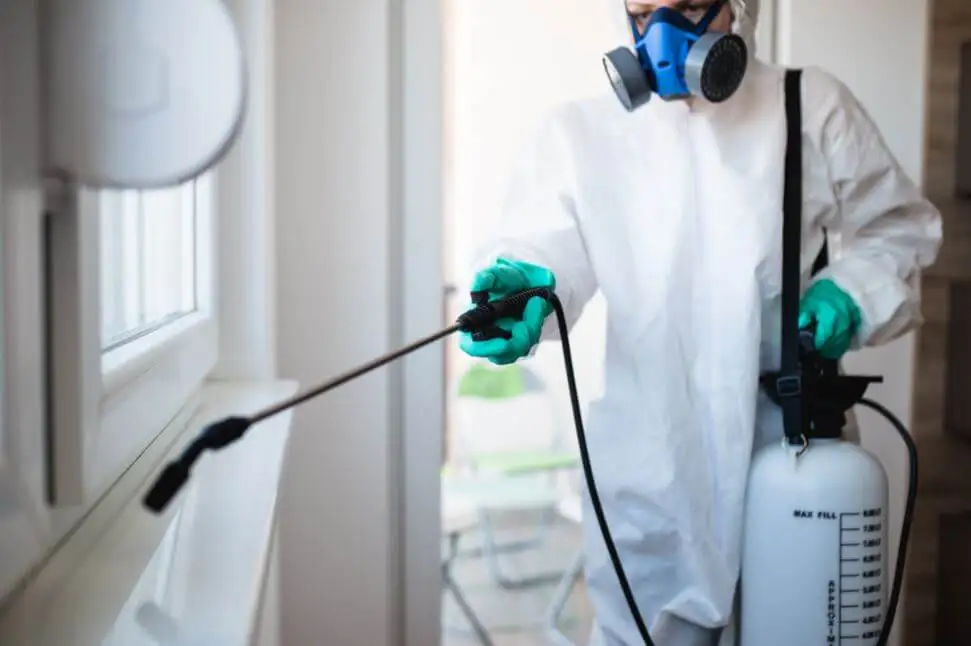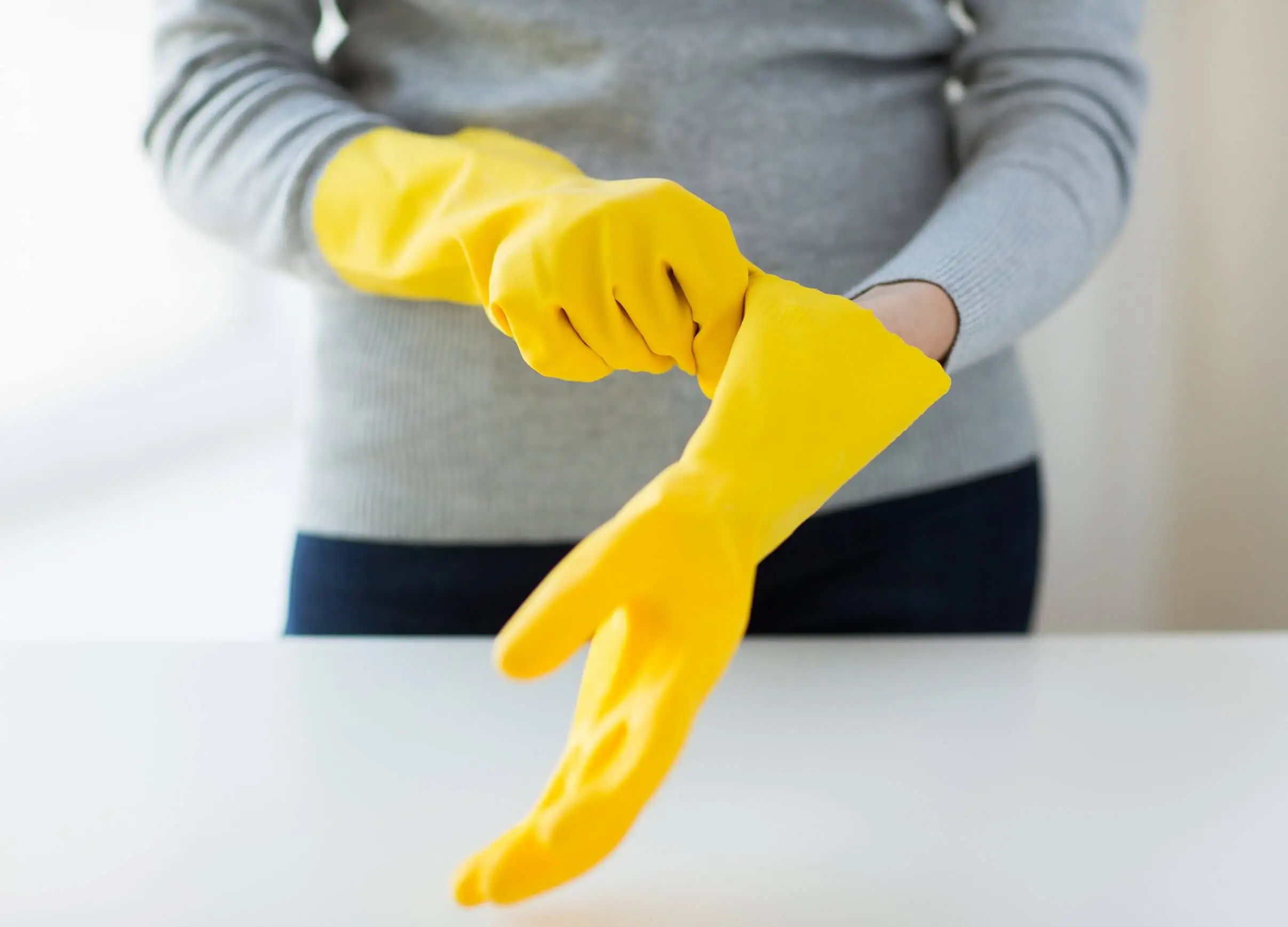How to Clean Up After a Fumigation - Steps and Tips


Reviewed and approved by the doctor Leonardo Biolatto
The application of insecticidal products to eliminate or control a pest that has invaded your home may be necessary. This process uses very powerful chemicals that differ from those used in the home. This is why it’s of utmost importance to learn how to clean up after a fumigation to make your home a safe environment.
When the disinfection is finished, the residues of the liquids or sprays that were used remain, so a thorough cleaning, following certain indications, is essential. Let’s take a look at everything you should keep in mind.
General questions about fumigation
Before and during the fumigation you should talk to the company that will carry out the work so that they can tell you what you should do after a fumigation. You need to know what pesticide products were used, how much time you must leave before you can return to your home, what residual effect is left, which cleaning substances they recommend, and which ones they don’t.
All this information is significant because each pest has its own poison and some are more potent than others. Some compounds, in combination with others, can be toxic to humans. In addition, as the UK Department of Health and Safety clarifies, there are substances that require in-depth training of the fumigator, and so they shouldn’t be applied by just anyone.
After a fumigation, you should wait at least 6 hours to return home. Some companies suggest waiting a couple of weeks before deep cleaning floors and other parts of the home to maintain the residual effect of the chemicals.

How to clean up after a fumigation?
Before you start, talk to the fumigation company for specific instructions on how long to wait before deep cleaning. As already mentioned, everything will depend on the pest that has been exterminated and the products that were handled.
The point is that, if you clean before the expert tells you to, you could reduce the effectiveness of the fumigation. And, if you don’t, there may be a risk of poisoning.
This is why we insist on following the recommendations of the disinfection company. In order to generalize this information, we have prepared a step-by-step that you should adapt according to your particular situation.
You may be interested in: Plant Pests and Diseases
When to go home
It’s estimated that you should wait 6 hours after disinfection before returning home. While this time may vary from case to case, it’s best to open doors and windows and go outside.
When to start cleaning
Most fumigation companies agree that you should allow about 24 hours to pass before you start cleaning your home. It isn’t recommended that you do it earlier because the fumigation won’t be as effective as expected.
General inspection
We suggest that you make a visual inspection to determine if there are surfaces that are still damp from the fumigation. If so, don’t touch or wipe them; wait for them to dry completely. Also, if you find any containers containing food that have been left open, dispose of the contents immediately.
Vacuuming for insects
If possible, vacuum every corner, as well as armchairs, chairs, curtains, and cushions. Do one room at a time. In the case of the kitchen, empty all the cupboards for cleaning.
You might be interested in: 8 Tips for Deep Cleaning Your Home Efficiently
What products to use?
Do a regular deep cleaning, but keep in mind some important issues. Avoid using detergents, bleach, and other flammable liquids. Remember that you already have considerable chemical residues in your home.
In these cases, a simple neutral cleaner would be best. Start with glass and furniture, then move on to floors, using warm water, cloths, and sponges.
For safety, use gloves, goggles, and even a mask if necessary.

Final tips for cleaning up after a fumigation
It isn’t necessary to wash all dishes, clothes, and other items after a fumigation. However, if you feel happier doing so, there’s no problem at all.
If there are children in the house, you should wash all their toys and pay special attention to the play area. The same applies to pets; try not to feed them in the area that has been fumigated.
Another important issue is the damage that can be suffered if the house hasn’t been well-ventilated or if you have returned home too early. Symptoms of mild poisoning are as follows:
- Dizziness
- Diarrhea
- Vomiting
- Chest pain
- Difficulty breathing
The symptoms of the most severe cases of poisoning due to exposure or inhalation of poison may appear a few hours or even a few days after the fumigation. The important thing is to go to the nearest health center and carry with you the disinfection card indicating the product and dosage used.
All cited sources were thoroughly reviewed by our team to ensure their quality, reliability, currency, and validity. The bibliography of this article was considered reliable and of academic or scientific accuracy.
- Ambiente ESEM. Título: Uso de Pesticidas Domésticos en Países en Desarrollo y su Impacto en la Salud Pública: Estudio de factibilidad. P. imprenta: Hamburgo. DD. se julio 1999. Impreso. 27 pag.
- Cambra Alberti, S. Estado actual y crítica de los procedimientos de desinfección. Ars Medica, 10(104), 196-217. http://revistes.iec.cat/index.php/AM/article/download/138999/1376700
- Chuecos, J. M. (1990). Intoxicación por insecticidas anticolinesterásicos. Revista de toxicología, 7(2), 135-149. https://dialnet.unirioja.es/servlet/articulo?codigo=8085068
- Ferrer, A. (2003). Intoxicación por plaguicidas. En Anales del sistema sanitario de Navarra (Vol. 26, pp. 155-171). Gobierno de Navarra. Departamento de Salud.
- Fumigation, H. S. E. (2015). Health and safety guidance for employers and technicians carrying out fumigation operations. HSG251: Health and Safety Executive (HSE).
- Melo Salas, P. N. (2016). Riesgos epidemiológicos en controladores de plagas de la ciudad de Los Ángeles. http://repositorio.udec.cl/handle/11594/2341
- Thundiyil, J. G., Stober, J., Besbelli, N., & Pronczuk, J. (2008). Acute pesticide poisoning: a proposed classification tool. Bulletin of the World Health Organization, 86(3), 205–209. https://doi.org/10.2471/blt.08.041814
This text is provided for informational purposes only and does not replace consultation with a professional. If in doubt, consult your specialist.








